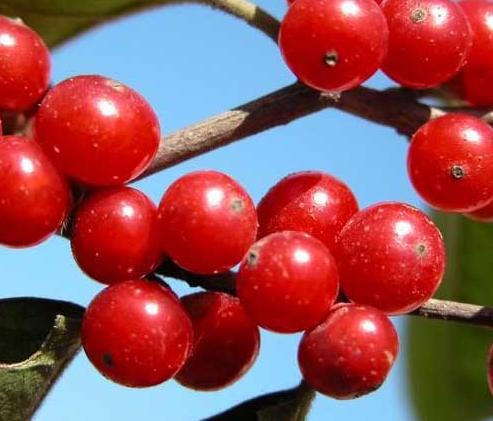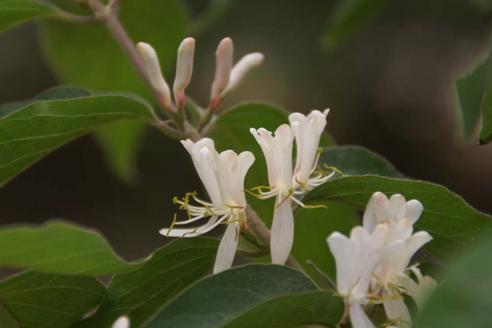Amur Honeysuckle seed lonicera maackii podocarpa
Native to Manchuria, Japan, Korea and china, Amur honeysuckle (sometimes commonly called bush honeysuckle) is a densely-branched, deciduous shrub that typically grows to 15' tall. It features tapered, ovate to lanceolate, medium to dark green leaves to 3" long with a shiny and glabrous upper surface. It is one of the earliest shrubs to leaf out in the spring, and one of the last to drop its foliage in the fall. Fall color is green to chartreuse, sometimes tinged with purple but ornamentally ineffective, persisting into November and slowly abscising. Flowers are very fragrant; 1 inch tubular two-lipped, white changing to cream then faded yellow. Flowers bloom in May-June with each Flower effective for up to two weeks. Flowers are borne upright, with four per node on the second year wood. Flowers give way to small juicy, dark red berries in clusters which are inedible to humans but loved by birds that help spread the seed. Amur honeysuckle is most ornamentally effective in October and November when the numerous bright red berries contrast well against the persistent dark green glossy leaves
Genus: Lonicera
Species: maackii podocarpa
Common Name: Amur Honeysuckle
Pre-treatment: required
Zone Hardiness Cold: 2
Zone Hardiness warm: 8
Height / Spread: 4m/4m
Plant Type: Medium Shrub
Growth rate: fast
Vegetation type: deciduous
Flower color: white
DESCRIPTION:
Vigorous in growth and setting seed, Amur honeysuckle is a tough and cold hardy shrub with fragrant white-becoming-yellow blossoms followed by attractive red fruits. An upright but spreading to fountain-shaped deciduous shrub, it is native to China (Manchuria) to Korea and Japan. In fertile soils with good moisture this plant reliably becomes invasive, especially as hungry songbirds quickly eat and spread the seeds every year. Thus, Amur honeysuckle is regarded as invasive shrub for cold region landscapes.
Usually multi-trunked, this shrub attains a small tree-like shape with spreading and arching branches. Its bark is grayish tan and exfoliates. The dark green leaves are arranged in pairs on the stems and are oval to lance-like. In early summer, two-lipped tubular white flowers are borne on the stems, and age to yellow. They are fragrant and attract insects for their effective pollination. Afterwards scores of attractive small red to dark red berries lines the branches and are quickly eaten by birds.
Amur honeysuckle is adaptable to most soil types that have fertility and have good drainage. Vigorous and readily self-sowing, this shrub is not recommended for general landscape use as it frequently escapes cultivation. Favored uses may only be for hillside stabilization or difficult urban sites where most other greenery cannot flourish


